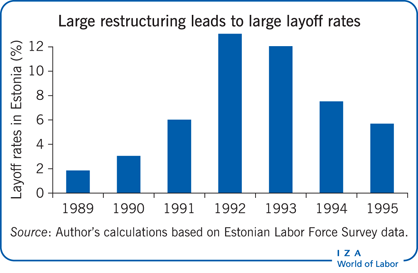Elevator pitch
Continuous enterprise restructuring is needed for the transition and emerging market economies to become and remain competitive. However, the beneficial effects of restructuring in the medium run are accompanied by large worker displacement. The costs of displacement can be large and long-lasting for some workers and for the economy. To devise the right policy interventions, governments need to fully understand which workers are displaced and what costs they bear.

Key findings
Pros
Involuntary layoffs are an essential part of enterprise restructuring.
Involuntary layoffs are small relative to voluntary job separations.
Displacement entails separations from unviable jobs that free resources for more productive use.
Many displaced workers rapidly find new employment, particularly in expanding sectors of the economy.
Layoffs and worker reallocation may relieve firms of excess labor.
Cons
In periods of extensive restructuring, involuntary layoffs may be high.
Long and frequent periods of unemployment imply an under-use of society’s resources.
Some displaced workers might lose firm-specific skills and thus have lower productivity in new jobs.
Not all displaced workers are reallocated to new jobs in expanding sectors.
A substantial minority of displaced workers become long-term unemployed.